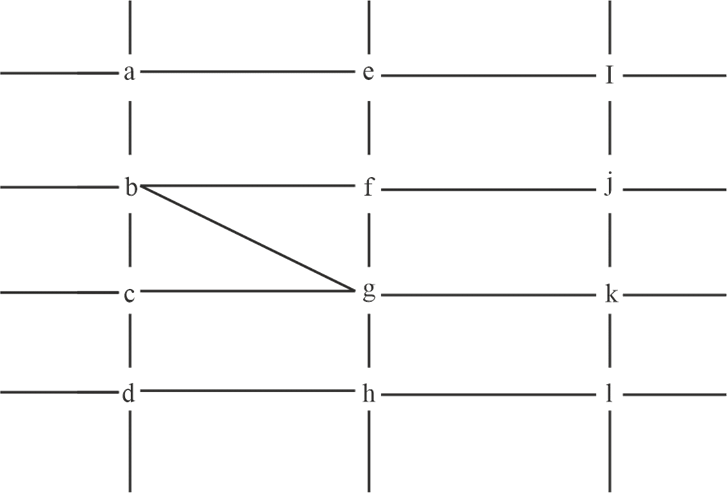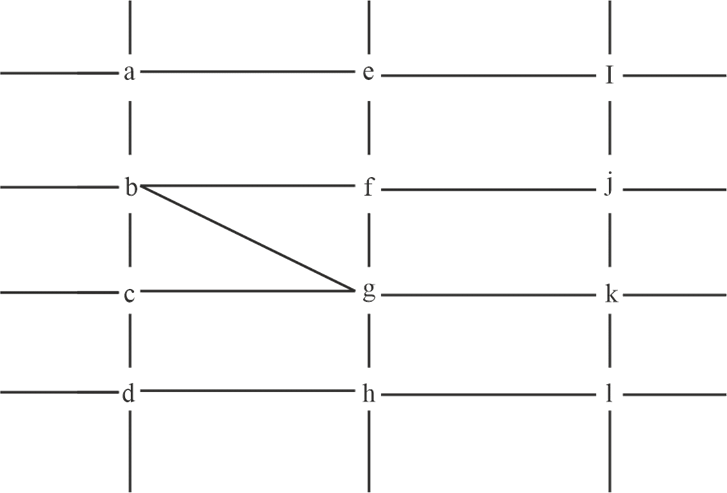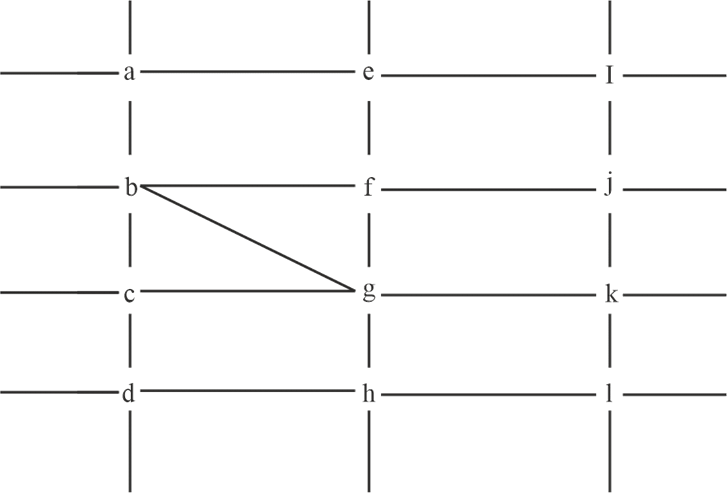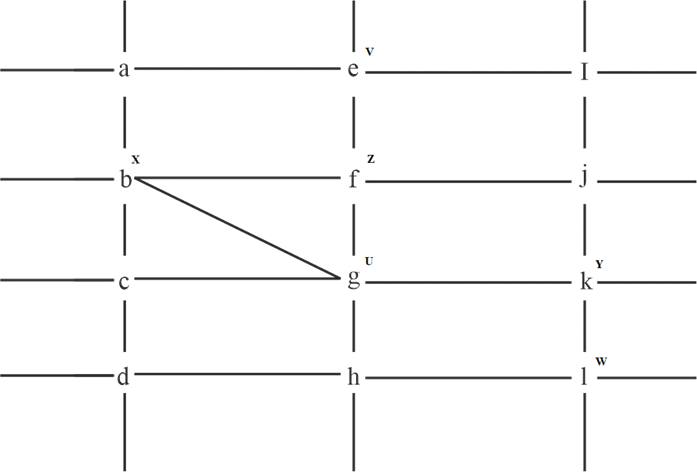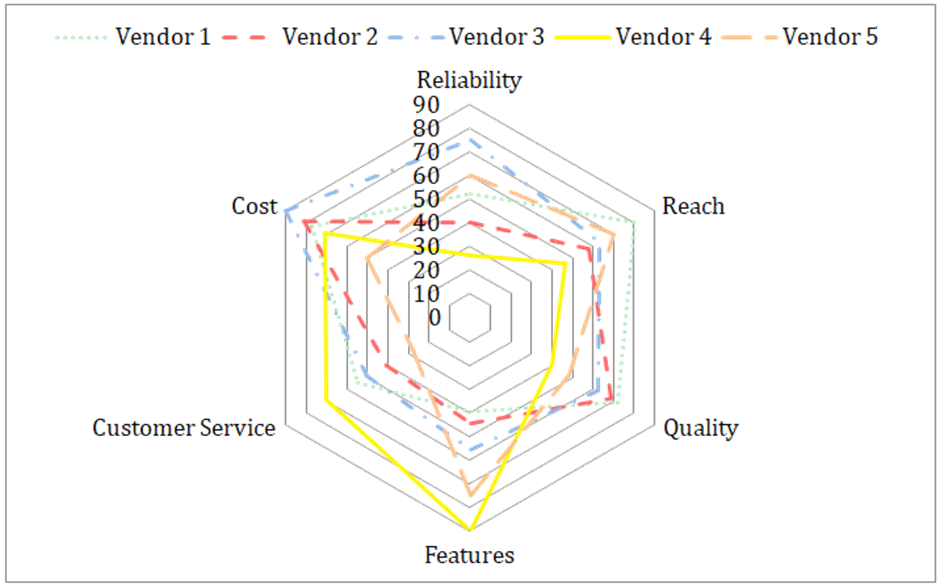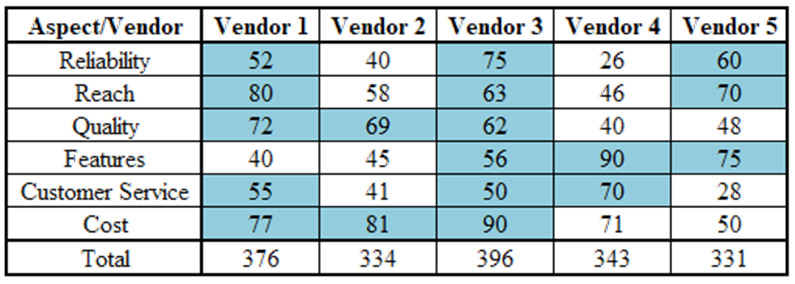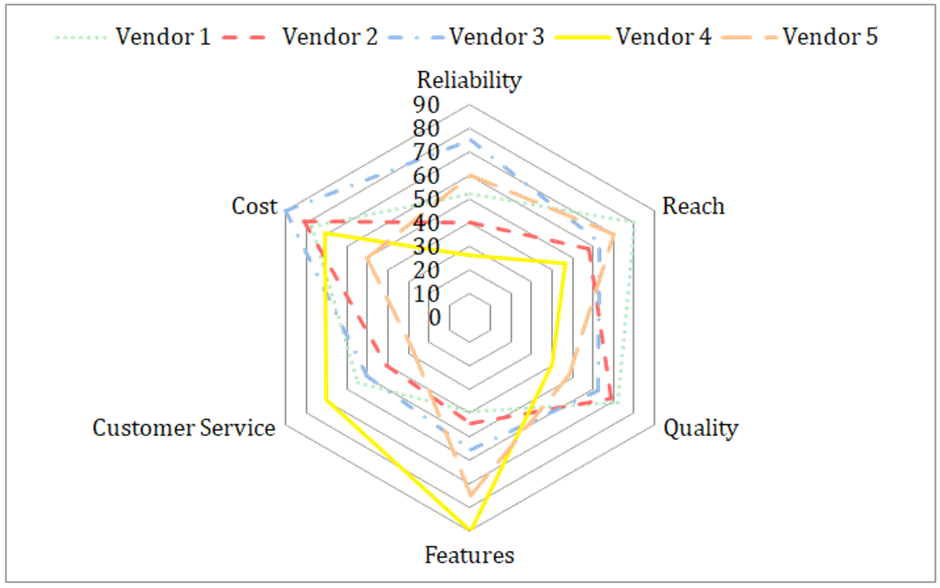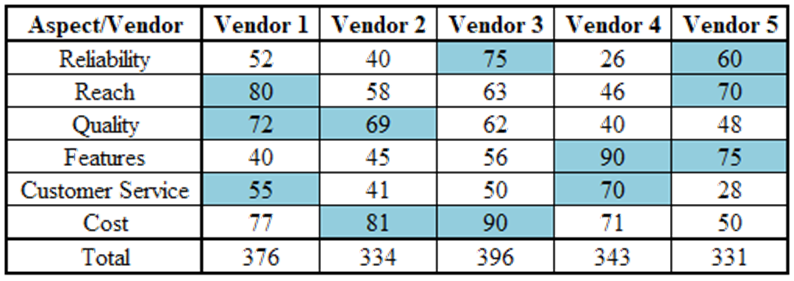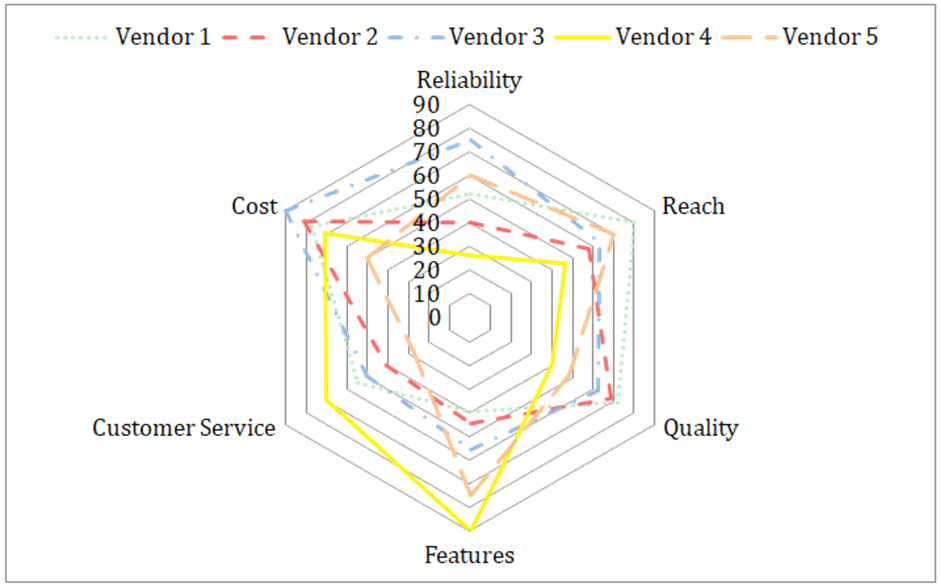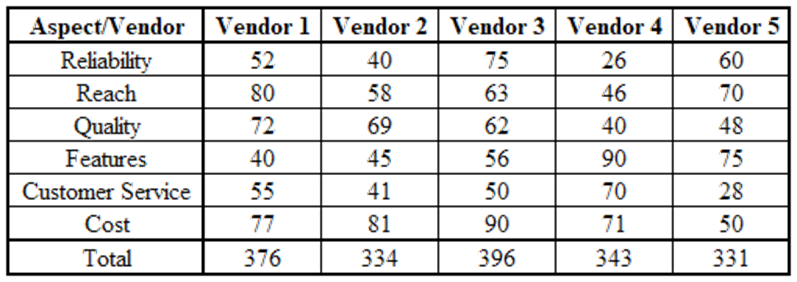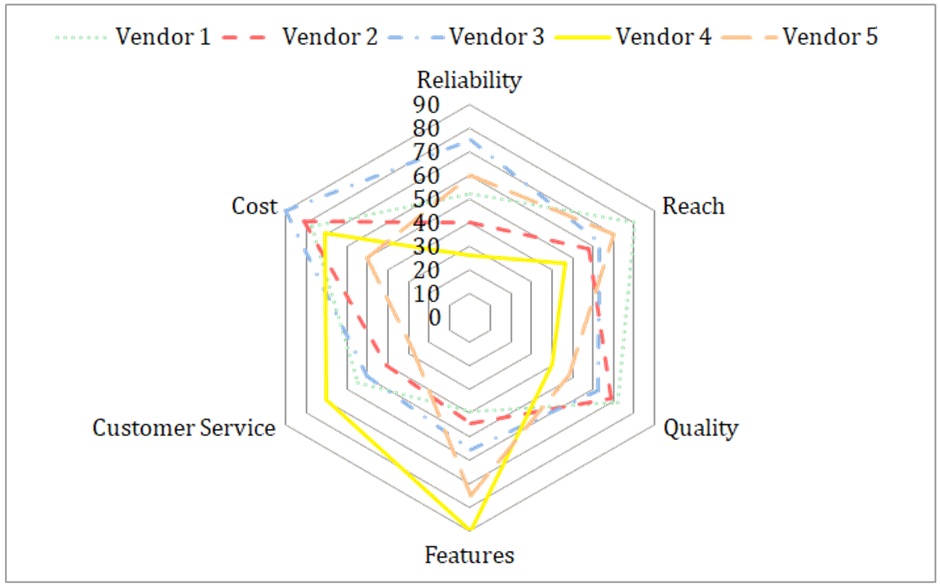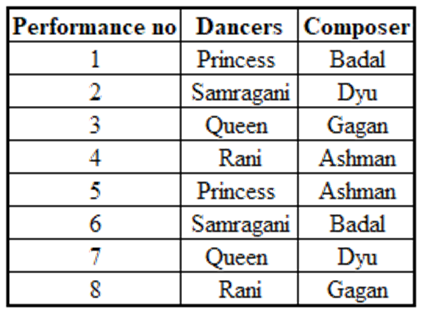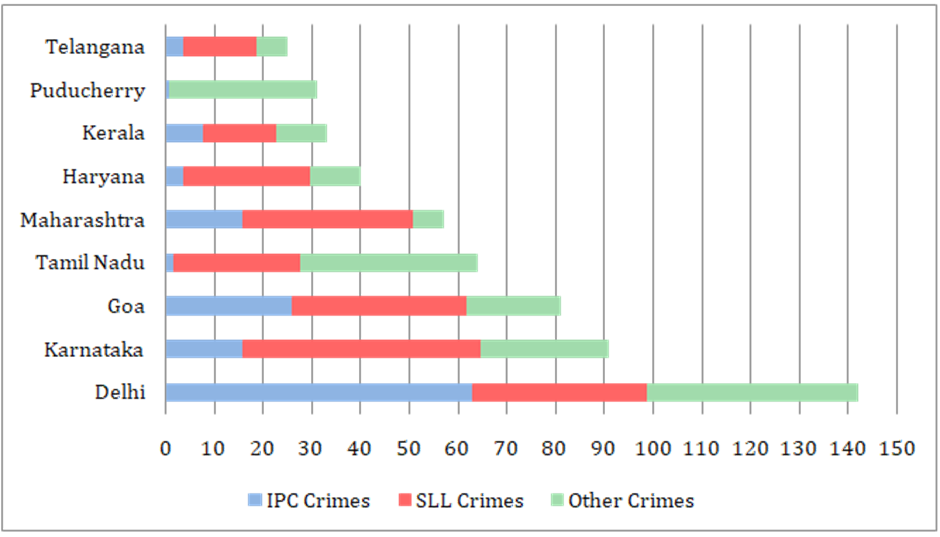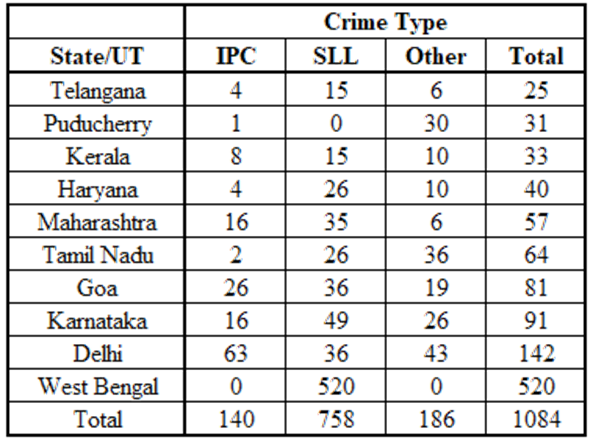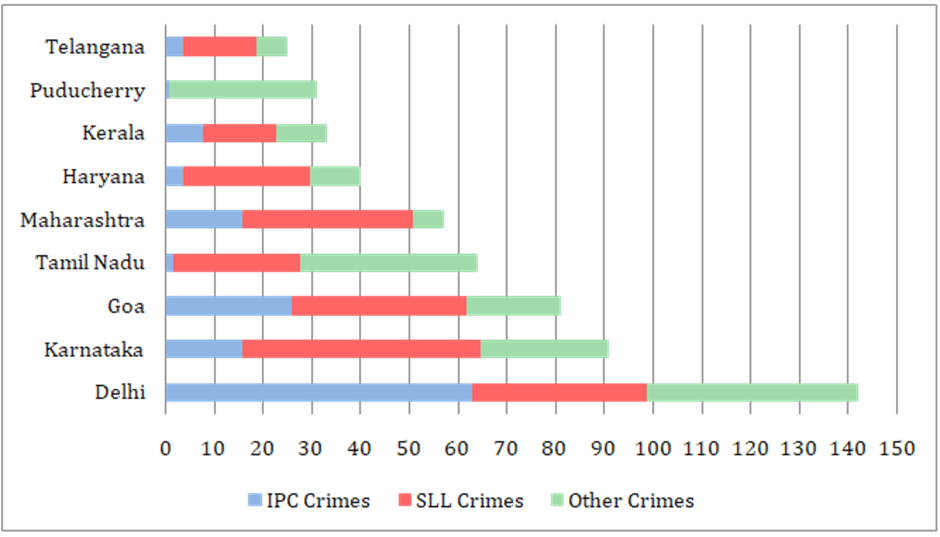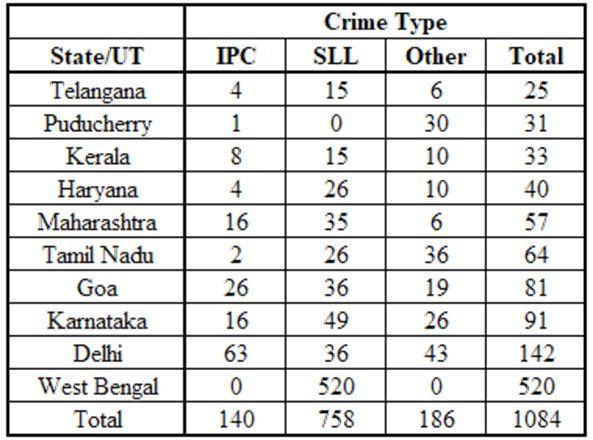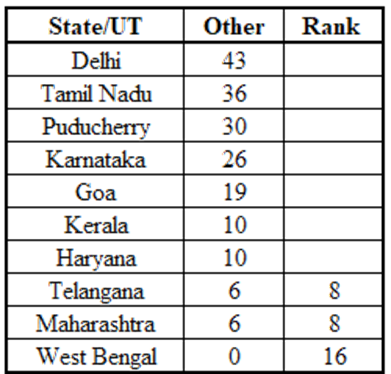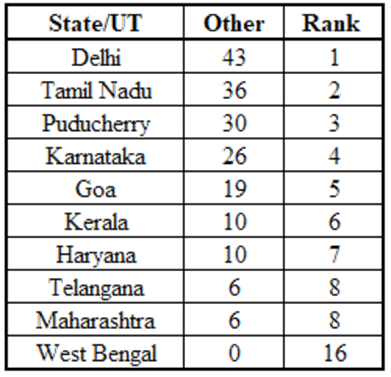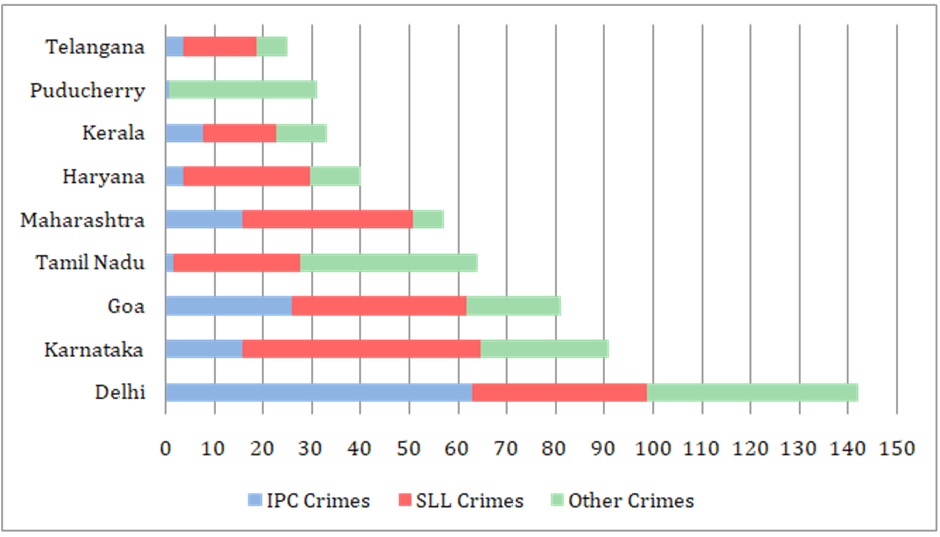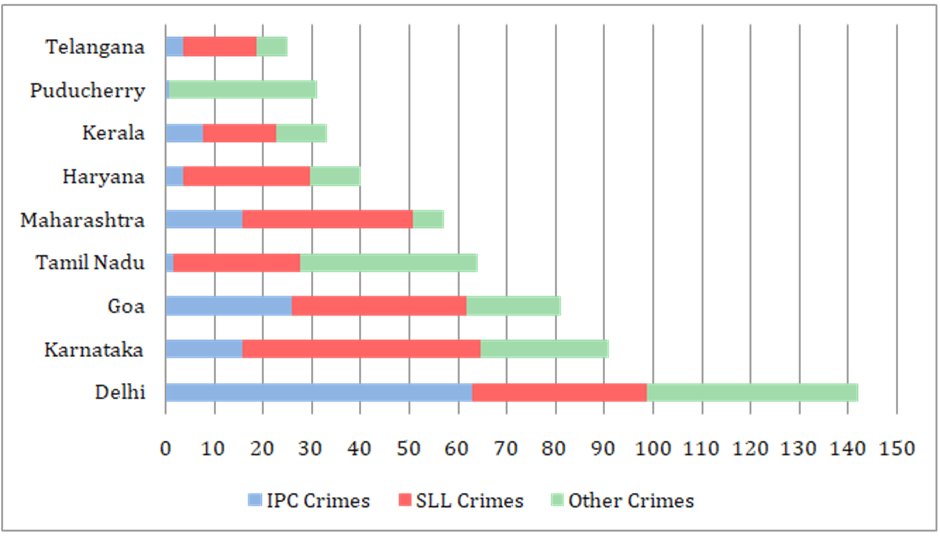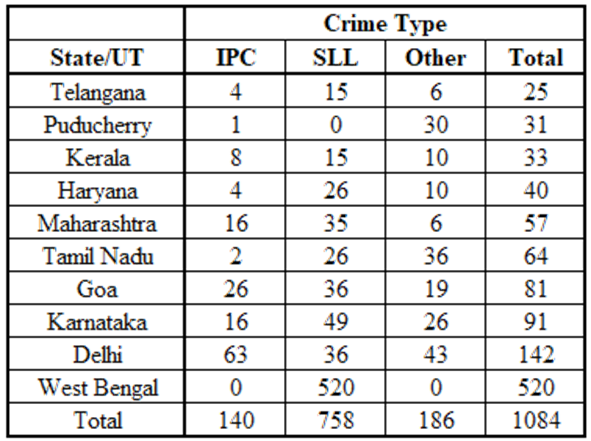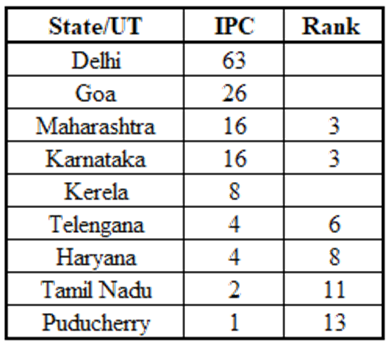Directions for questions 63 to 66:
Answer the following question based on the information given below.
Questions 63 to 66 carry 3 marks each.
The figure below shows the street map for a certain region with the street intersections marked from a through l. A person standing at an intersection can see along straight lines to other intersections that are in her line of sight and all other people standing at these intersections. For example, a person standing at intersection g can see all people standing at intersections b, c, e, f, h, and k. In particular, the person standing at intersection g can see the person standing at intersection e irrespective of whether there is a person standing at intersection f.

Six people U, V, W, X, Y, and Z, are standing at different intersections. No two people are standing at the same intersection.
The following additional facts are known.
- X, U, and Z are standing at the three corners of a triangle formed by three street segments.
- X can see only U and Z.
- Y can see only U and W.
- U sees V standing in the next intersection behind Z.
- W cannot see V or Z. 6. No one among the six is standing at intersection d.
Q. 1.
Should a new person stand at intersection d, who among the six would she see?
- A).
V and X only
- B).
W and X only
- C).
U and Z only
- D).
U and W only
